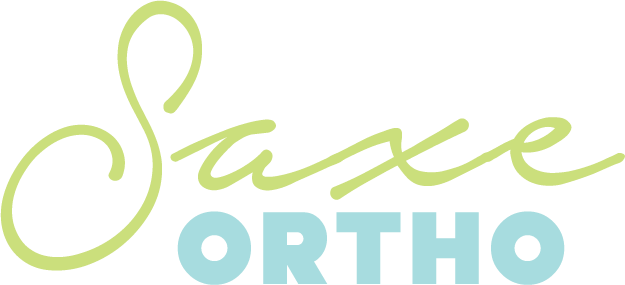Spoiler alert: Yes you can! Using your HSA to pay for orthodontic treatment is not only possible, but it can also lower your costs and give you greater value for your money.
Here’s everything you need to know about HSAs for orthodontics– so you can make the best decision for your smile (and your wallet).
What is HSA or FSA?
HSA stands for Health Savings Account, which is a type of savings account that allows you to set money aside (pre-taxed) to be used for qualifying medical expenses. This money can then be withdrawn tax-free and dedicated toward healthcare deductibles, copays or out-of-pocket costs.
HSA funds are tax-deductible, tax-deferred and tax-free! Since HSA money goes into your account untaxed and comes out of it untaxed, this allows you to get even greater value from your HSA funds than you would from your typical checking or savings account.
An FSA, which stands for Flexible Spending Account, is essentially a less-flexible version of an HSA. For example, FSA funds may not be able to roll over to the next year if benefits aren’t used by the end of the year. FSAs are also owned by your employer, whereas HSAs are personal savings accounts.
Can you use HSA for braces?
You sure can! In fact, any orthodontic treatment deemed necessary after your free initial orthodontic exam can be considered a qualified medical expense for your HSA.
Orthodontic treatment with braces or Invisalign® clear aligners is not just for cosmetic benefits. While orthodontic treatment can and will improve your appearance and confidence drastically, it can also improve your quality of life and a number of major functions related to your teeth and jaw bones.
For example, orthodontic treatment can help widen the jaw bones and free blockages from the airways to improve breathing and sleeping quality. Some cases of sleep apnea can be treated with orthodontics alone. For many people, orthodontic treatment is medically necessary to improve their quality of life and can therefore be covered by HSAs.
Can HSAs apply to all types of braces?
Your personal HSA can apply to any type of orthodontic treatment deemed medically necessary. So, yes – your HSA funds can be put toward any type of braces, including traditional metal braces, clear or metal self-ligating (tie-less) braces, or Invisalign clear aligners for you or your child!
We’re proud to offer a wide range of advanced orthodontic treatment options to suit our patients’ lifestyles! With any type of braces, the portion of your orthodontics cost that isn’t covered by your insurance company may be covered by your HSA account.
Do HSA funds roll over to the next year?
Yes, unlike FSA accounts, all money in an HSA account rolls over to the next year. If you have a healthcare FSA from your employer that does roll over, you’ll only be able to carry over about $570 from your 2022 contributions to 2023.
If you have an FSA, it’s a good idea to use those funds before the year ends in order to receive the maximum benefit! We encourage you to request your complimentary exam with us to get the treatment process started and make the most out of your 2022 FSA!
How do you use an HSA for orthodontics?
The steps you’ll need to take to apply your HSA funds to your orthodontics costs will depend on your specific provider. However, there are a few common ways to access or redeem your savings.
- Use your HSA debit card or benefits card. When you open your HSA, you typically receive a debit card attached to your account to access your funds. You can use this benefits card like you would a traditional debit card, but only for healthcare expenses. If you use the HSA debit card method, you can simply swipe your card to use your HSA for orthodontics.
- Write a check from your HSA. Nowadays, checks are not as common as debit cards for HSAs, but if you prefer to use a check to access your funds, you will receive a checkbook linked to your account. You can then write a check the same way you would a traditional check to cover medical expenses.
- Complete an online payment to your orthodontist. Online payments have proven to be one of the easiest routes for using HSA funds. With many HSAs, you can send money directly to your orthodontist, like you would with a traditional bank account. HSAs can be linked similarly to bank accounts.
- Get reimbursed. If you don’t have enough money accrued in your HSA, you can pay your treatment costs out-of-pocket, then file for a reimbursement from your HSA months or years down the road.
With orthodontic HSA fund applications, you have options! In most cases, it’s up to you to decide how you want to apply your HSA funds in a way that’s most convenient for you.
We’re here to help!
At Saxe Orthodontics, we’re here to help in any way we can. We’re happy to discuss how you can apply your HSA to your orthodontics cost.
On your first visit to our orthodontist office in Summerlin, Las Vegas, we’ll help you configure your costs and develop an affordable payment plan to cover your out-of-pocket expenses with your HSA.
We’re proud to offer a variety of payment options to make your braces costs or Invisalign costs affordable for you!
Everyone deserves to have a smile that makes them proud – and a financial plan that makes them feel comfortable. If you have any questions, please don’t hesitate to reach out to us. Dr. Saxe and our team love hearing from you!
Ready to start your journey? Request your complimentary exam with us today!






